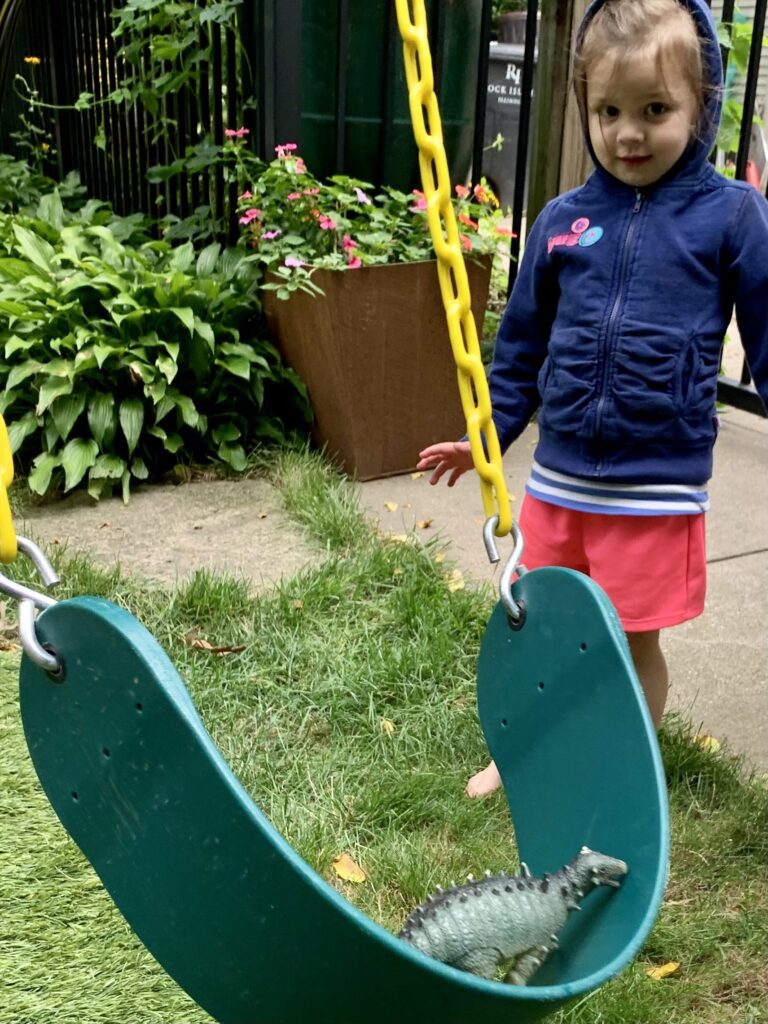Physics on the Playground
“Noa, what are you doing?” questions Jose.
“I’m giving this rock a swing!” giggles Noa as she embarks on her latest investigation into force and motion.
“Are you sure that will work?" James asks. “I think the rock will fall off!”
We all stop what we are doing to observe as Noa cautiously pulls the swing back a few feet and then lets it go.
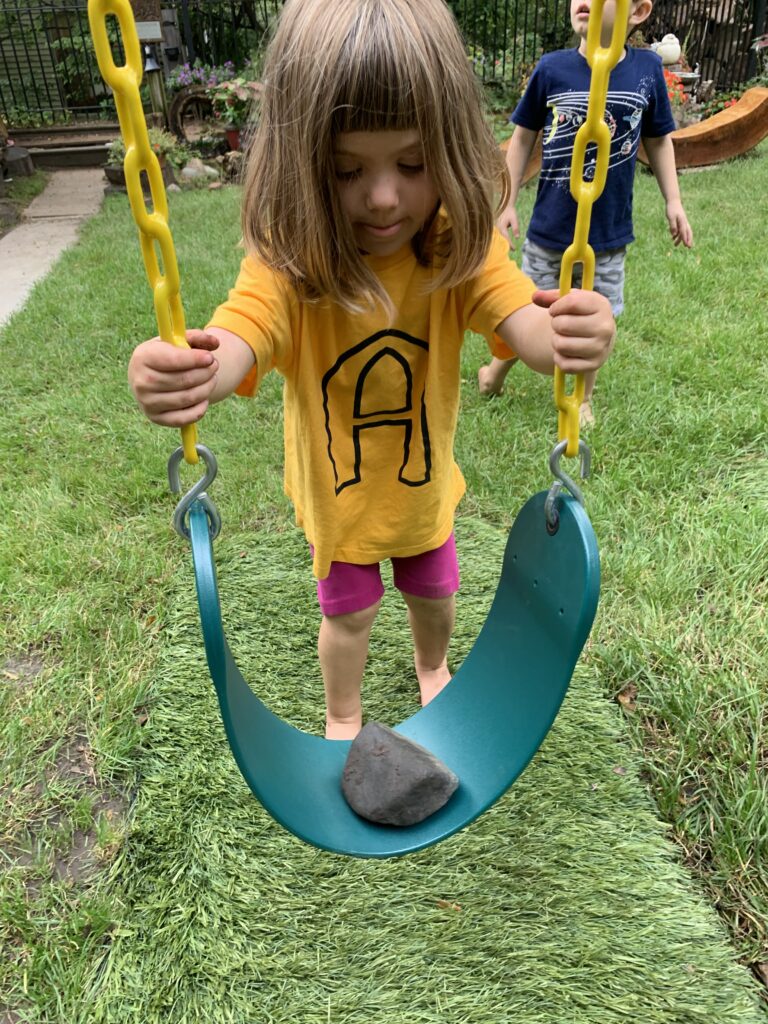
“Hey! It didn't fall off!" James exclaims.
"How did you do that?” shouts Eleanor, who runs over with James to see what this latest investigation is all about.
“Well, sometimes the rock falls off. I think when I push it too hard and the swing gets jiggly, the rock falls off,” theorizes Noa.
She continues to experiment: “This time I pulled it. I think if I pull it, it stays on better than if I push it.”
Noa is conducting research, gathering information and developing theories.
This is physics!
Physics is simply the study of matter and how it interacts with energy and forces. Playground physics can happen on the slide, swings, teeter-totter or climbing gym.
Children experiment with physics through play. Maybe it isn't happening on the playground. Perhaps it's happening during block play or while racing cars.
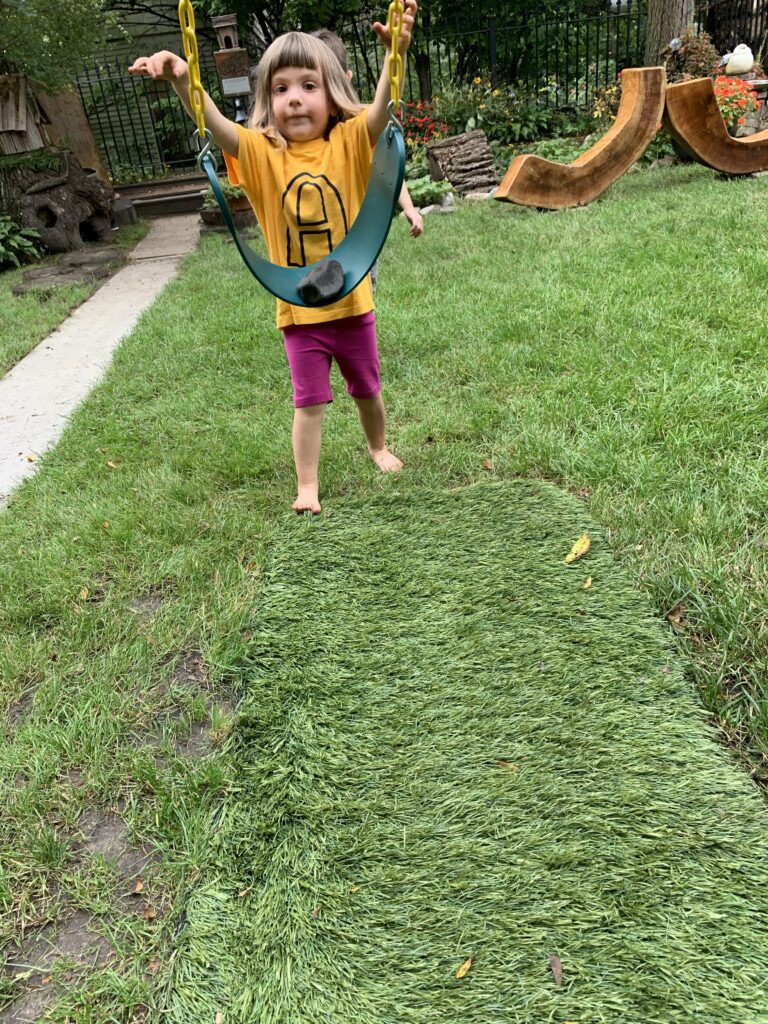
Noa’s curiosity and inquisitive nature have integrated science and math into our playground play. Now the gang is intuitively carrying out the Steps of the Scientific Method:
- Ask a question.
- Gather information and observe (research).
- Make a hypothesis (guess the answer).
- Experiment and test your various hypotheses.
- Analyze your test results.
- Present a conclusion.
I didn’t “learn” the Scientific Method as a child. I memorized it. But Noa and the gang are living it. They are out in the sunshine, creating their own hands-on version of the Scientific Method.
This is what child-led learning looks like! Our playground is our outdoor laboratory—and the children are constantly conducting scientific investigations to test out their hypotheses.
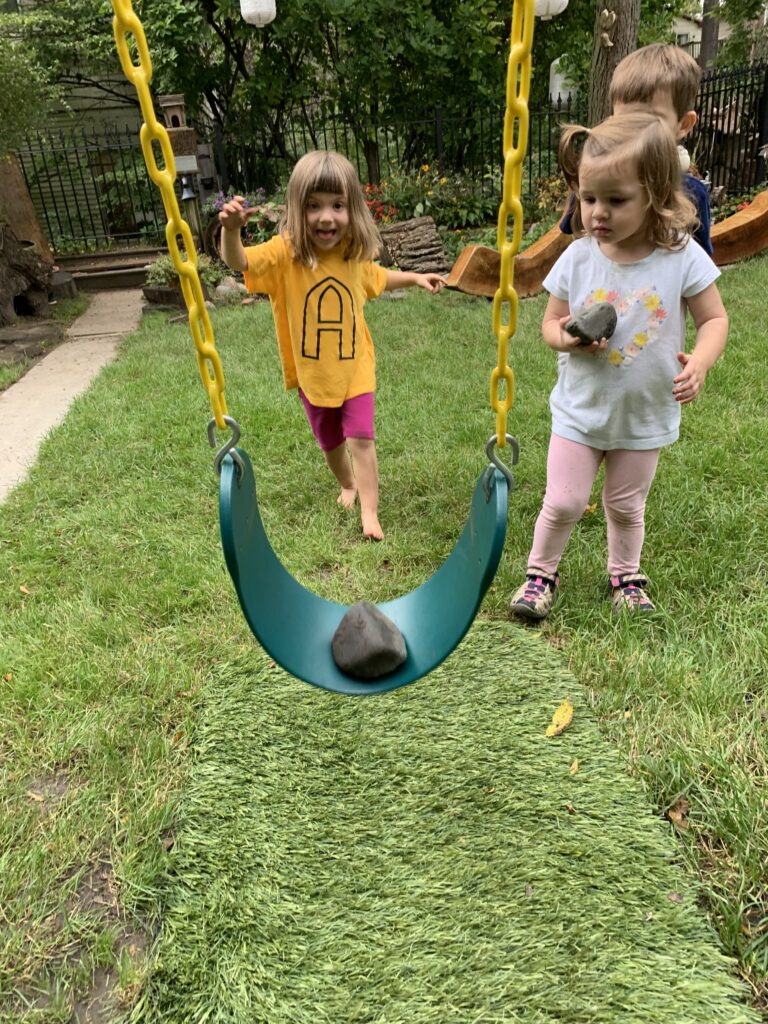
“What if you don't push it very hard?" asks Eleanor. "Then will it stay on?”
“I think so! Let me try it,” confirms Thalhah as she joins in the experiment.
“I think it will be too fast and bumpy,” Saaliha interjects.

I watch and listen while the children make predictions, test their predictions and tweak their techniques as they work their way to a conclusion.
Do I want to interrupt these children while they are in the process of discovering that even small amounts of motion and force can propel a pendulum?
By the way, if you're wondering where to find a pendulum, head over to the park or playground and find a swing set. Yes, playground swings are pendulums!
Noa and the gang are learning about pendulums, gravity, force, motion, inertia, push, pull, simple machines and Newton's First Law, which tells us that an object won't change its motion unless acted upon by a force.
We are exploring advanced science concepts as we play with a swing and a rock on a preschool playground.
See how much learning can happen when we give children the time, materials and space to explore?
As the research continues, the children replace the rock with a dinosaur—and the investigation deepens.
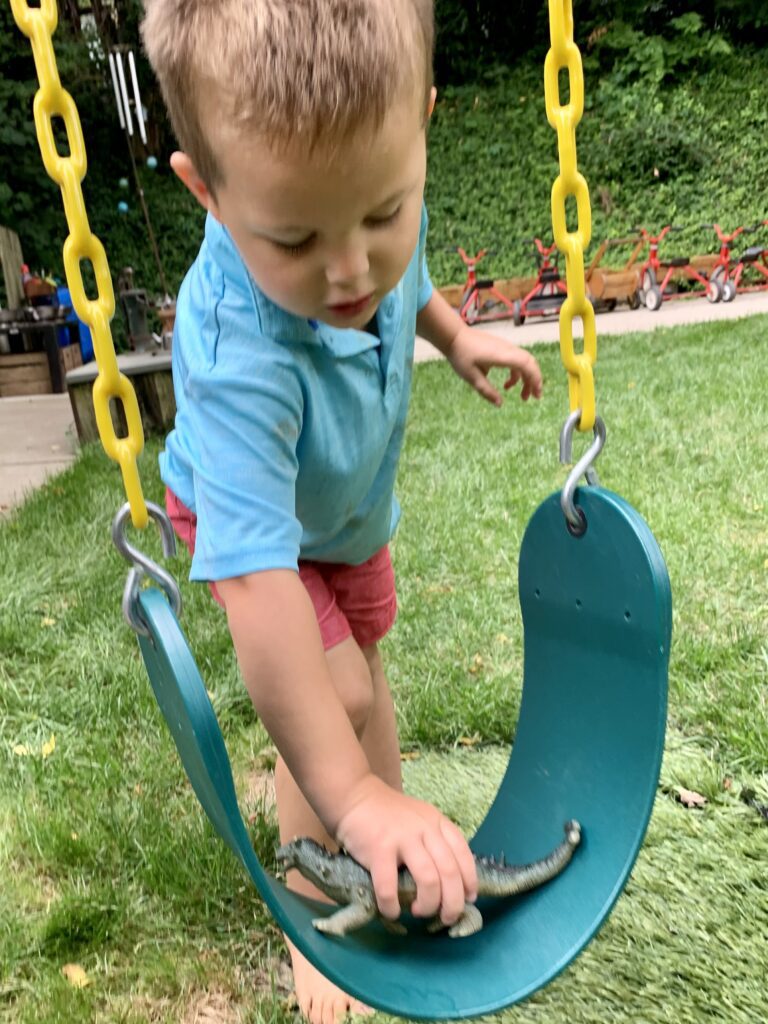
There is a lot of science behind all of that fun. Young children are natural scientists who are constantly exploring the world around them.
We don't have to discuss the Scientific Method or Newton's Law. The children will learn about these laws and concepts in the years to come.
Right now, we just want them to learn through play.
What could be more fun than playground science? So find a playground and let the STEM investigations begin!
Ready for more physics fun? Check out Obstace Course Math on our Ready Child activity page!
